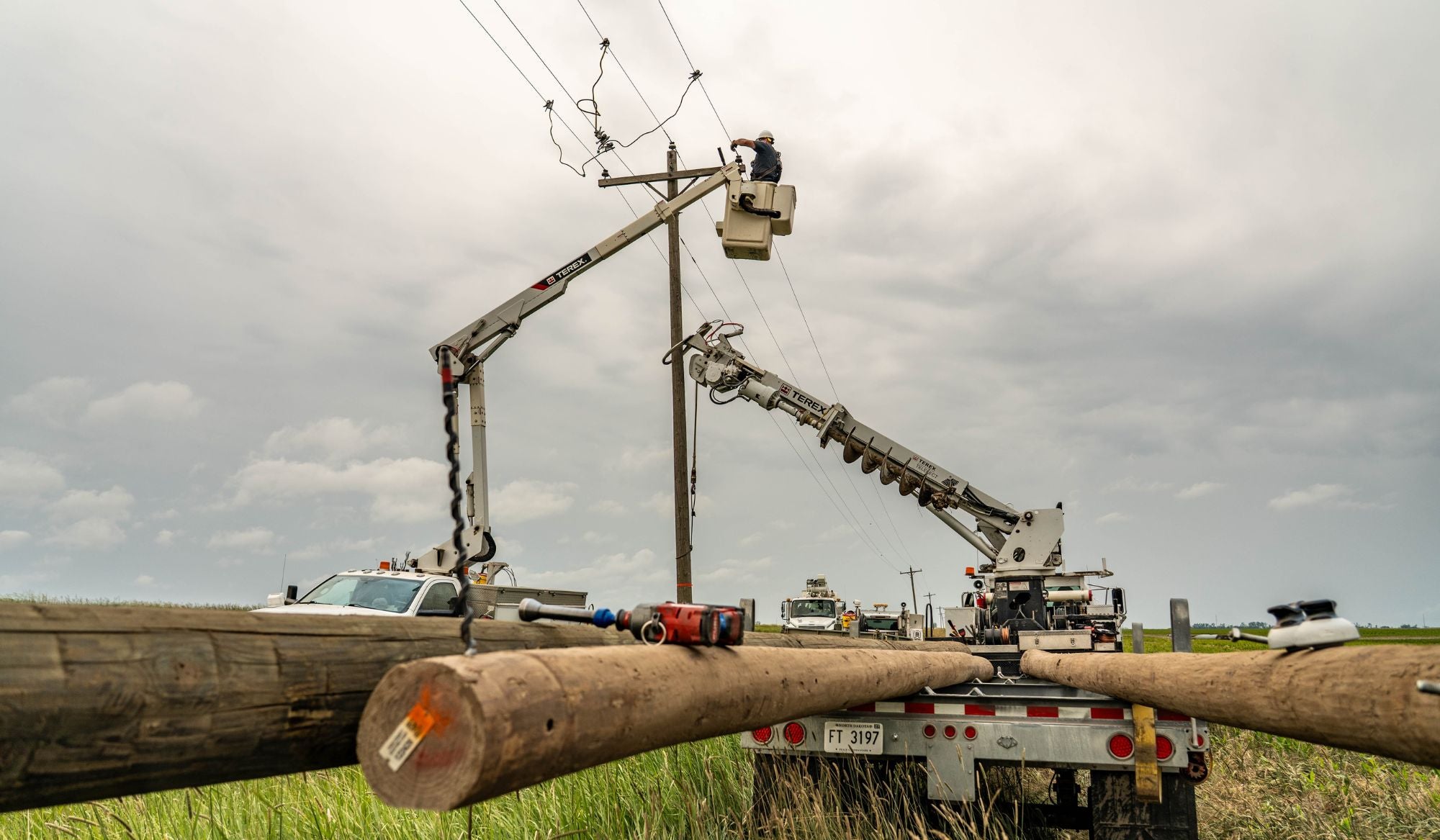We're hiring! Check out our opportunities on our careers page!
Our Office: 4100 32nd Ave. S. Fargo, ND 58104
Our Office: 4100 32nd Ave. S. Fargo, ND 58104

They’re so common, most of us don’t give them a second glance. Wooden poles stand shoulder to shoulder across farm fields, weave through neighborhoods, and line gravel roads. But these quiet power poles do more than hold up wires — they carry entire communities.
At Cass County Electric Cooperative (CCEC), those poles are a foundational part of keeping the lights on. With more than 56,000 in our service territory, it takes planning, precision and a lot of behind-the-scenes work to make sure they continue doing their job every day.
And that story starts with testing.
Every year, about 4,000 poles get a checkup. It’s part of a 12-year rotation that’s not only required but deeply valued by CCEC’s engineering and operations teams.
“We’d still be doing this even if it wasn’t required,” said CJ Erickson, manager of system maintenance and fleet at CCEC. “This is about keeping our system strong, safe and reliable.”
To carry out this task, CCEC partners with Utility Inspection Services, a seasoned contractor that specializes in pole testing. They use GPS tracking to log each site and physically inspect each pole, looking not just at the wood but also the surrounding equipment and environment.
“We’re ahead of where we need to be,” CJ added. “And it shows. Only about five or six poles per year are flagged as urgent. That’s a testament to the strength of the system.”
There’s no high-tech flash to it. No dramatic hum of machines. Just trained professionals with sharp eyes, seasoned ears and a few essential tools.
Each test follows a simple three-step routine:
“It’s like tapping a watermelon,” CJ explained. “You can hear if something’s wrong, but the drill tells you what’s happening inside.”
Most decay happens where you can’t see it — right at or just below the ground line, where moisture, insects and time quietly do their work. Catching it early can make all the difference.
Pole testing isn’t just about keeping the power flowing. It’s about keeping people safe.
“Number one, safety,” CJ said. “We have to make sure the poles can handle what they’re designed to do.”
Urgent poles are tagged as “priority” and typically replaced within a week. Less critical ones are scheduled for replacement within the year, often timed around seasonal conditions or field access.
Planning plays a big role. Everything from snowpack and frozen soil to road access and crop rotation can affect timing.
“Sometimes the easiest part is replacing the pole,” CJ said. “It’s the planning that’s the challenge.”
When it comes time to swap the old for the new, CCEC crews often manage the work with minimal or no disruption to members. But if a short outage is needed for safety, that’s the route the team will take.
“We always go on the side of caution. Whether it’s a half-hour or an hour outage, we’d rather do it safer and more efficiently.”
Most poles in CCEC’s system are made of treated wood. Newer installations occasionally use fiberglass or galvanized steel, but it’s the older poles that continue to impress.
“Some of our best poles are from 1949,” CJ said. “They were treated differently and grown slower, and they’ve stood the test of time.”
Today’s poles are grown faster and treated with modern preservatives, in compliance with EPA regulations. But as CJ noted, they’re not always as durable as the slow-grown, resin-rich timber of decades past.
Even wildlife plays a role in a pole’s longevity.
“Beavers are actually one of our biggest pests, chewing two feet up,” CJ said. “You’d be surprised how much damage they can do.” Once poles are removed, many are recycled by local members for fencing or farm projects. Hardware is stripped, tags are removed and, with a quick release form, the old poles begin a new chapter.
When work needs to be done on private land, CCEC makes every effort to coordinate in advance. That includes calls or text notifications, and always respect for property and timing.
“If we’re going onto someone’s land, they’ll know,” CJ said. “We’re respectful. If something can wait until harvest, we wait.”
As grid technology evolves, new tools are coming into play, including drones, remote sensors and predictive data modeling. But for now, nothing beats a trained crew on the ground.
“There’s some advanced technology out there, but it can’t see inside the pole,” CJ explained. “That’s why boots on the ground still matter.”
With reject rates below 2% and proactive testing leading the way, CCEC’s pole system is not only holding strong — it’s getting stronger.